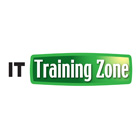Problem Management: Introduction and Process Activities

Über den Vortrag
Der Vortrag „Problem Management: Introduction and Process Activities“ von IT Training Zone ist Bestandteil des Kurses „ITIL® OSA - Operational Support and Analysis “. Der Vortrag ist dabei in folgende Kapitel unterteilt:
- Lesson Contents
- Purpose, Objectives
- Exercise - Value
- Process Steps
- Categorisation and Prioritisation
- Workarounds
- Resolution and Closure
Quiz zum Vortrag
What is the ITIL definition of a problem?
- The unknown cause of one or more incidents
- An unplanned interruption to service or reduction in the quality of service
- Something that has significance for the management of a service
- An item which requires management in order to support an IT service
Which of these best describes the purpose of Problem Management?
- To prevent incidents from occurring
- To restore normal service as quickly as possible
- To manage configuration items in a single database
- To manage notifications of service failure
Which of these is NOT a key objective of Problem Management?
- Authorizing the changes to fix underlying problems
- Prevent problems and resulting incidents from happening
- Eliminate recurring incidents
- Minimize the impact of incidents that cannot be prevented
Which of these statements is / are correct?
- Problem Management’s purpose is to manage problems throughout their lifecycle
- Problem Management should detect problems, and manage them to a resolution
- Neither
Which of these activities is NOT included in the scope of the Problem Management process?
- Release of resolutions into the live environment
- Maintaining information about problems, resolutions and workarounds
- Activities relating to the diagnosis of root cause
- Ensuring resolutions are implemented through the appropriate processes
Which of these correctly reflects the sub-processes of Problem Management?
- Reactive and Proactive Management
- Business, Service and Component Management
- Operational and Application Management
- Demand and Cost Management
Which of these is NOT a key principle for Problem Management?
- Authorise changes that are associated to problems
- Track problems separately from incidents
- Manage problem records in an appropriate system
- Manage problems with consistent prioritisation
What is the main reason for development of a problem model?
- Identifying an agreed approach to understanding underlying causes
- Identifying incidents which need to be controlled
- Management of the authorisation of problems
- Management of changes to the infrastructure
Which of these statements is true?
- Incidents are unplanned interruptions to service
- Problems are the underlying cause of incidents
- Neither
Which of these is the correct description of reactive Problem Management?
- Executed as part of Service Operation, in response to the need to identify root cause of incidents
- Management of incidents in a major disaster
- Initiated in Service Operation, but driven as part of Continual Service Improvement to identify where preventative measures can be employed
- Restoring normal service as quickly as possible
Which of these best describes the first step of the reactive Problem Management process?
- Detect the problem
- Identification of incidents
- Categorise the incident and problem
- Log the problem based on incident information
Why is it important to log all problems?
- To ensure suitable control and escalation of the issue
- To ensure that users are assured of a first time fix
- To ensure that all problems are recorded as changes
- To ensure the impact of problems can be linked to changes
Which of these statements is / are correct?
- Problem Management should ensure that problem records are linked to the associated incident records
- All problem records will trigger Requests For Change
- Neither
Which of these statements BEST reflects the way problems should be categorised?
- Problems should be categorised using the same approach as Incident Management
- Problems should not be categorised as this leads to incorrect assumptions
- Problems should be categorised according to the business service they affect
- Problems should be categorised to match the Service Portfolio
Which of these tools are recognised as supporting the investigation and diagnosis step of the Problem Management process?
- Configuration Management System and Known Error Database
- Service Portfolio and Availability Management Information System
- Service Catalogue and Known Error Database
- Service Portfolio and Service Catalogue
Which of these correctly reflects the description of a workaround?
- A temporary way of overcoming the difficulties
- The restoration of service by a change
- An incident that has an identified root cause
- A problem that has an associated RFC
When would you raise a known error Record?
- As soon in the problem process as it is useful to do so
- When the incident is raised
- As soon as the problem is raised
- Only after the RFC has been implemented to fix the root cause
What is the main reason for capturing financial information about a problem resolution?
- Cost may be a factor in deciding whether or not to implement a fix for the problem
- There is no justification for capturing financial information about problems
- Only by understanding the cost can you identify the root cause of an incident
- Incident Management can only link to problems that have a cost justification
Which of these statements is true?
- Only major problems are likely to be reviewed for improvement lessons
- All problems should be subject to a review no matter how severe the impact
- Neither
Kundenrezensionen
5,0 von 5 Sternen
| 5 Sterne |
|
5 |
| 4 Sterne |
|
0 |
| 3 Sterne |
|
0 |
| 2 Sterne |
|
0 |
| 1 Stern |
|
0 |


